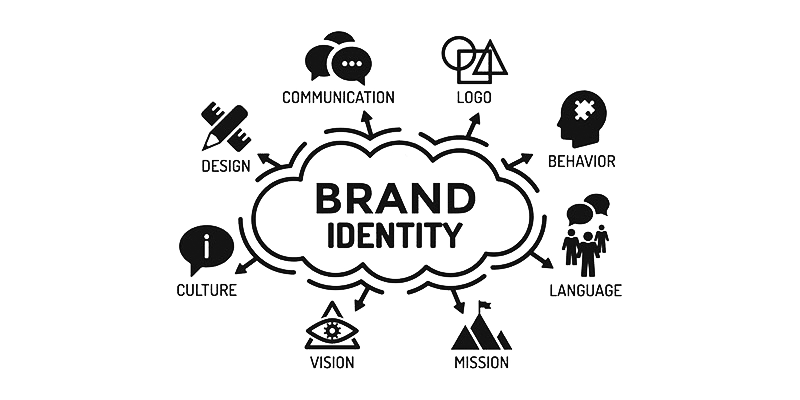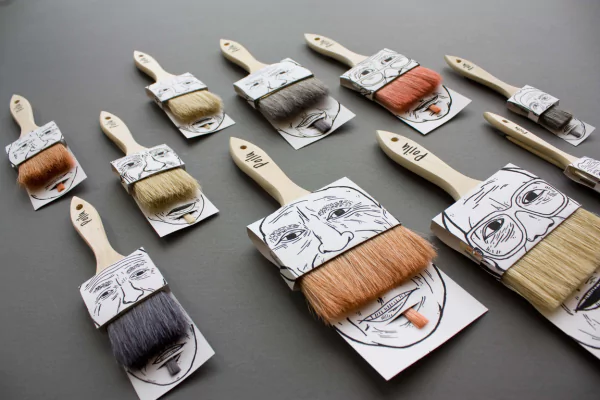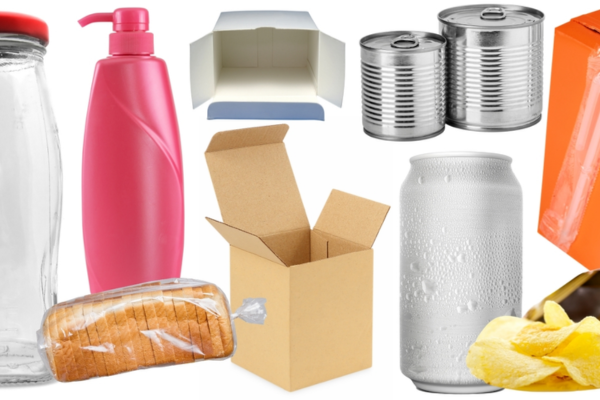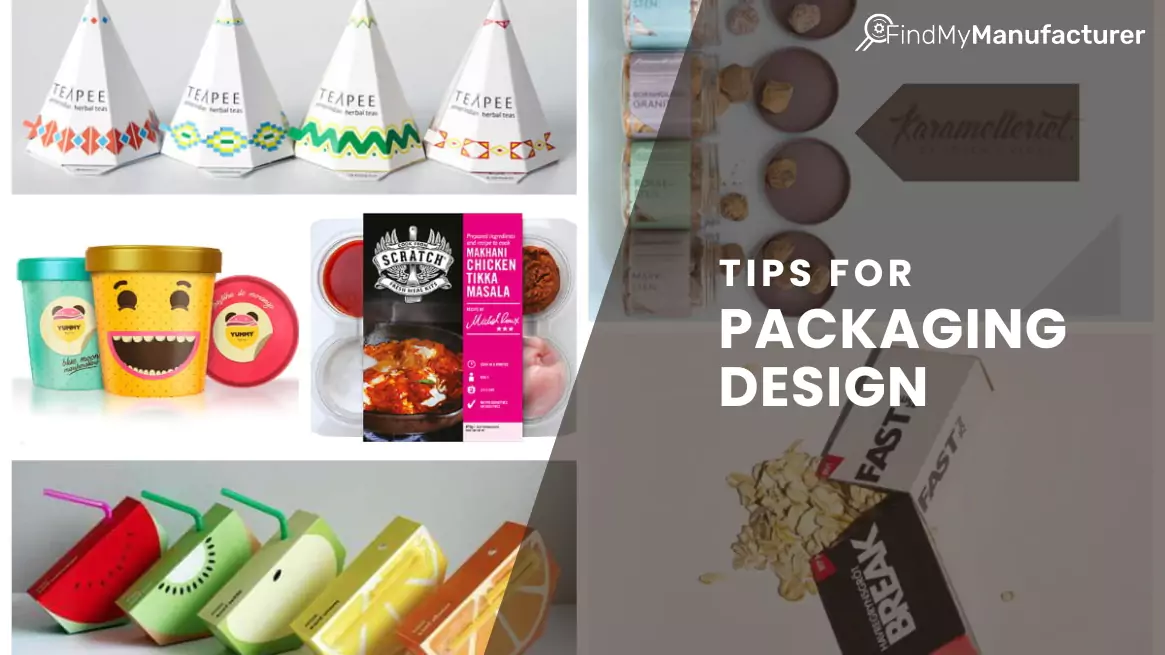In the landscape of private label and contract manufacturing, what is packaging design becomes a critical aspect in distinguishing products within a fiercely competitive market. Delving into packaging design tips unveils the significance of creating a unique visual identity for private label products, rooted in a profound understanding of brand values and the preferences of the target audience. Implementing packaging design tips not only establishes a robust market presence but also nurtures consumer loyalty by aligning with the brand ethos. For contract manufacturing products, where shared production facilities are common, strategic packaging design serves as a vital means of differentiation. Collaborative efforts between manufacturers and clients become instrumental in crafting packaging that not only effectively showcases the product but also seamlessly aligns with individual brand narratives. This article explores essential tips for packaging design, providing insights into the nuances of private label and contract manufacturing, to enhance brand recognition, foster consumer trust, and ensure overall market success.
1. Understand Your Brand Identity

Exploring tips for package design underscores the importance of understanding your brand identity, serving as a foundational step in creating impactful packaging for private label and contract manufacturing products. This process necessitates a meticulous examination of the brand’s core values, mission, and unique personality traits. When implementing tips for package design, the goal is to align packaging with these essential elements, allowing companies to establish a visual language that resonates authentically with their target audience. Whether through the strategic use of specific colors, typography, or imagery, the harmonious connection between packaging and brand identity facilitates immediate recognition and reinforces the brand’s narrative. This approach lays the groundwork for a compelling consumer experience, emphasizing the transformative impact of incorporating effective tips for package design.
2. Know Your Audience
In the domain of private label products, a comprehensive grasp of your audience is crucial in shaping effective product packaging design strategies. The process of understanding your audience extends to a deep dive into demographic details, consumer preferences, and market trends particular to the niche addressed by the private label. When implementing product packaging design, tailoring it to resonate seamlessly with the identified demographic becomes pivotal. Through this personalized approach, brands not only elevate the visual appeal of their products but also forge a profound connection that transcends aesthetics. This tailored strategy enhances the product’s market positioning and cultivates brand loyalty, fostering a genuine alignment between the product and the consumer’s preferences and lifestyles.
3. Research Competitor Packaging
Researching competitor packaging is a crucial aspect of private label package design, offering valuable insights that can set products apart in a competitive market. By closely analyzing competitors, brands can identify prevailing trends, uncover gaps in the market, and strategically position their own products. This thorough examination allows for the incorporation of unique design elements that differentiate the private label from similar offerings. It’s not just about keeping pace with the industry; it’s about seizing opportunities to innovate and create packaging that captures consumer attention by standing out amidst the myriad of choices on the shelves.
4. Stand Out From the Competition

Standing out from the competition through effective packaging design is crucial for capturing consumer attention and influencing purchasing decisions. In a crowded marketplace, distinctive and eye-catching packaging helps a product to be noticed on the shelves, creating a memorable visual imprint. A unique and well-designed package sets a brand apart, signaling quality and innovation to consumers. Moreover, it establishes a competitive edge, making the product more likely to be chosen over alternatives, thereby driving sales and fostering brand recognition in a competitive market.
5. Simplicity is Key
In the realm of private label packaging design, simplicity emerges as a guiding principle that can significantly impact consumer perception and engagement. By adhering to a less-is-more approach, brands can create designs that are not only visually appealing but also convey a clear and concise message. Simplicity ensures that key elements such as branding, product information, and imagery are easily digestible, allowing consumers to make quick and informed purchasing decisions. In a market saturated with options, a straightforward and clutter-free design can enhance the product’s visibility, fostering a memorable and positive impression on potential buyers.
6) Consider Packaging Materials

In the context of top packaging design companies, the careful consideration of packaging materials emerges as a pivotal aspect, exerting influence not only on aesthetics but also serving as a reflection of a brand’s dedication to sustainability and quality. The selection of materials plays a crucial role in communicating a consistent narrative to consumers, showcasing the brand’s values and commitment to responsible practices. Whether the preference is for eco-friendly, recycled, or innovative materials, the chosen packaging materials become a tangible representation of the brand’s unwavering dedication to environmental responsibility. Going beyond visual appeal, the thoughtful consideration of materials must also account for practical aspects, ensuring the chosen materials provide adequate protection for the product during transit and storage. Ultimately, within the realm of top packaging design companies, the meticulous choice of packaging materials stands as a pivotal element, contributing to a holistic and impactful design that resonates with both brand identity and consumer expectations.
7) Stay on Top of Trends
Staying on top of trends in packaging design is essential for brands seeking to remain relevant and appealing to consumers. Trends reflect evolving consumer preferences, and incorporating these shifts into packaging ensures that products resonate with contemporary tastes. Adapting to current design trends not only enhances a brand’s visual appeal but also communicates a sense of freshness and innovation, capturing the attention of modern consumers. Furthermore, aligning with the latest design trends demonstrates a brand’s commitment to staying current and understanding the dynamic nature of the market, fostering a positive perception and maintaining competitiveness in the ever-evolving business landscape.
8) Typography and Font Choices
The choice of typography in packaging design holds the power to convey brand messaging effectively and leave a lasting impression on consumers. It’s essential to opt for readable fonts that align with the brand’s identity, ensuring that the text is easily comprehensible at a glance. Consistency in font choices across various packaging elements fosters a cohesive and recognizable brand image. Moreover, the selected typography should harmonize with other design elements, reinforcing the overall aesthetic appeal and contributing to the creation of a visually engaging and memorable packaging experience for consumers.
9) Color Psychology
Color psychology plays a pivotal role in packaging design, influencing consumer emotions and perceptions. By carefully selecting colors that align with the brand’s message and evoke the desired emotional response, packaging can communicate subtle cues about the product’s identity. Warm tones may convey energy and passion, while cool tones evoke calmness and serenity. Consistency in color choices across packaging elements ensures a cohesive visual identity, reinforcing brand recognition and leaving a lasting impression on consumers. In essence, the strategic use of color in packaging design becomes a powerful tool for brands to connect with their target audience on a visceral and emotional level.
10) Imagery and Graphics
In the realm of packaging design, imagery, and graphics serve as visual storytellers, offering a compelling narrative that resonates with consumers. The integration of high-quality images and graphics not only captures attention but also contributes to the overall brand storytelling. These visual elements should align seamlessly with the brand’s identity, conveying messages that reinforce product quality and value. Moving beyond aesthetics, functionality becomes a key consideration in packaging design, emphasizing practical aspects that enhance user experience. Packaging should not only be visually appealing but also user-friendly, ensuring ease of use and accessibility for consumers while maintaining a harmonious blend of form and function.
11) Storytelling through Packaging

Storytelling through packaging design is an artful strategy that goes beyond aesthetics, aiming to forge a deep emotional connection between the product and the consumer. By weaving a narrative that resonates with the target audience, brands can evoke emotions, spark interest, and create a memorable experience around their products. This storytelling approach transforms packaging into more than just a protective layer; it becomes a gateway to a brand’s identity and values. Concurrently, testing and iterating on the design are vital steps to ensure its effectiveness. Gathering feedback, conducting A/B testing, and incorporating improvements based on consumer responses not only fine-tune the design but also enhance its ability to captivate and engage the audience effectively.
12) Legal Considerations
Navigating legal considerations is paramount in the realm of packaging design for contract manufacturing, where collaboration with multiple brands necessitates meticulous adherence to regulations and trademarks. Designers must stay informed about industry-specific regulations, ensuring that the packaging aligns with legal standards for safety, information disclosure, and product claims. Moreover, addressing trademark issues is crucial to avoid potential conflicts and protect both the manufacturer’s and the client’s brand identity. Compliance with labeling requirements not only establishes transparency but also builds trust with consumers. In essence, prioritizing legal considerations in contract manufacturing packaging design is a fundamental step in fostering a successful, legally sound, and ethically responsible product presentation.
13) Packaging Size and Shape
When delving into packaging design, particularly in the context of size and shape considerations, it’s imperative to strike a balance between practicality and brand recognition. Choosing an appropriate size ensures efficiency in storage, shipping, and display, contributing to a seamless logistical process. Simultaneously, the packaging’s shape should align with the brand’s visual identity, fostering instant recognition on the shelves. Whether opting for traditional shapes or innovative designs, the form should complement the function, enhancing both user experience and brand visibility. In essence, thoughtful considerations of size and shape in packaging design contribute not only to operational efficiency but also to the creation of a distinct and memorable brand presence.
14) Accessibility and Inclusivity
In the realm of packaging design, prioritizing accessibility and inclusivity is a cornerstone for creating products that cater to diverse audiences. Designers must consider the needs of all consumers, including those with disabilities, by ensuring that packaging is user-friendly and easy to open. Additionally, embracing sustainability practices is integral in contemporary packaging design. By opting for eco-friendly materials, reducing waste, and communicating transparently about sustainable initiatives, brands can align their packaging practices with the growing consumer demand for environmentally conscious choices. Combining accessibility and sustainability not only broadens a brand’s appeal but also reflects a commitment to inclusivity and responsible business practices.
15) Seasonal and Limited Edition Packaging
In the realm of private label branding, leveraging seasonal and limited edition packaging becomes a strategic approach to infuse excitement and create a sense of exclusivity among consumers. An exemplary case is Trader Joe’s, known for its innovative and captivating packaging changes tied to seasons or special occasions. The grocery chain introduces limited edition designs that align with festive themes, capturing consumer attention and fostering a unique shopping experience. This not only generates anticipation but also creates a perception of freshness and dynamism, keeping the brand at the forefront of consumers’ minds. Through the artful use of seasonal and limited-edition packaging, private label brands can cultivate consumer enthusiasm and maintain a competitive edge in the market.
16) Consistency Across Product Lines
Ensuring consistency across product lines in packaging and product design is paramount for private label brands aiming for easy and instantaneous recognition in the market. By maintaining a cohesive visual identity, brands create a strong and unified presence that reinforces their overall image. A prime example of this strategic approach is Apple, where consistent design elements across various product lines, from iPhones to MacBooks, contribute to a seamless and recognizable brand experience. The repetition of key visual cues, such as logo placement, color schemes, and typography, establishes a sense of continuity that transcends individual products, fostering brand loyalty and trust. In essence, the careful orchestration of consistent design elements across diverse product lines strengthens brand cohesiveness, making it easier for consumers to connect with and identify the brand across a spectrum of offerings.
17) Digital Integration
In the contemporary landscape of packaging design, digital integration has become a dynamic strategy to elevate consumer engagement. Brands can harness the power of technology by incorporating elements like QR codes or augmented reality into their packaging. This not only provides an interactive dimension but also opens avenues for consumers to access additional information, promotions, or immersive experiences related to the product. A notable example is how beauty brands use QR codes to link consumers to tutorials or augmented reality apps allowing virtual product try-ons. By embracing digital integration, packaging design extends beyond the physical realm, creating an interconnected and engaging brand experience that resonates with tech-savvy consumers.
18) Budget Considerations
Navigating budget considerations in packaging design involves a delicate balance between achieving design excellence and ensuring cost-effectiveness for sustained success. Brands must strategically allocate resources to create visually compelling packaging that aligns with their identity while being mindful of production costs. One exemplary case is the success of private label brands like Kirkland Signature from Costco, which strikes a balance by offering high-quality packaging at a lower cost. This approach not only caters to budget-conscious consumers but also establishes the brand’s commitment to delivering value without compromising on aesthetics. In essence, meticulous budget considerations in packaging design are integral to achieving a harmonious blend of affordability and visual appeal, contributing to long-term brand success in the market.
19) Attention to Detail
Attention to detail is the hallmark of exceptional packaging design, where every element contributes to the overall visual narrative. Designers must meticulously consider aspects such as logo placement, color accuracy, and typography to ensure a cohesive and polished look. A brand that exemplifies this meticulous attention to detail is Tiffany & Co., where the iconic blue box and white ribbon are meticulously designed, creating an unmistakable and luxurious visual identity. From the choice of materials to the finishing touches, each element plays a role in conveying quality and reinforcing brand values. In essence, a commitment to precision in every facet of packaging design elevates the consumer’s perception, fostering trust and brand loyalty.
20) Durability Considerations
Durability is a pivotal aspect of packaging design as it directly influences the product’s safety and integrity throughout its journey from manufacturer to consumer. Robust packaging serves as a protective shield, guarding against potential damage, breakage, or deformation during transportation and handling. This reliability not only preserves the product’s quality but also minimizes the likelihood of customer dissatisfaction due to damaged goods. In essence, prioritizing durability in packaging design contributes to a positive consumer experience and reinforces the brand’s commitment to delivering products in pristine condition.
Conclusion
In conclusion, mastering the art of great packaging involves a meticulous integration of various tips and strategies tailored to the specific needs of the brand and its target audience. From understanding brand identity and engaging storytelling to embracing sustainable practices and prioritizing attention to detail, the journey to exceptional packaging is multifaceted. For businesses seeking top-notch packaging solutions, collaboration with top packaging and product design companies becomes paramount. These industry leaders bring expertise, innovation, and a keen understanding of market dynamics to the table, ensuring that the packaging not only meets the highest standards of design excellence but also resonates seamlessly with the brand’s identity and consumer expectations. In the competitive landscape, great packaging, coupled with the expertise of top packaging design companies, becomes a powerful catalyst for brand success, leaving a lasting impact on consumers and fostering long-term loyalty.
Retailers and brands are turning to Find My Manufacturer as an invaluable tool to identify exceptional packaging design companies. This platform serves as a centralized resource, streamlining the process of connecting businesses with top-tier design agencies that specialize in creating impactful packaging solutions. By leveraging Find My Manufacturer, retailers and brands gain access to a curated selection of design experts, enabling them to assess portfolios, expertise, and client feedback efficiently. This platform’s user-friendly interface facilitates informed decision-making, allowing businesses to select packaging design partners that align seamlessly with their unique needs and brand aesthetics. Find My Manufacturer emerges as a strategic ally, empowering retailers and brands to elevate their product presentation through collaborations with top-notch packaging design companies, thereby contributing to market success and heightened consumer engagement.
Frequently Asked Questions
How does packaging design influence consumers?
Packaging design exerts a profound influence on consumers by acting as the first point of interaction with a product. Visually appealing and well-crafted packaging captures attention and creates a positive initial impression, enticing consumers to explore further. The design elements, including colors, imagery, and typography, communicate brand identity, product information, and quality, influencing purchasing decisions. Additionally, thoughtful packaging design contributes to a memorable and enjoyable unboxing experience, fostering a sense of connection and satisfaction that can lead to brand loyalty and repeat business.
What are the different types of packaging designs?
There are many different types of packaging designs, but some of the most common are:
– Plastic boxes
– Slipcases
– Rigid boxes
– Tubes
– Pouches
– Bags
What are the benefits of packaging design?
There are many benefits to packaging design, including the ability to attract attention, communicate information, and protect the contents. Packaging design can also create an emotional connection with the consumer.
How much does package design cost?
The cost of package design varies widely depending on factors such as complexity, design agency reputation, and the scope of the project. For small businesses or startups, package design costs may range from a few hundred to a couple of thousand dollars for a basic design. Mid-sized businesses may invest anywhere from $5,000 to $20,000 for more comprehensive and intricate designs, while larger enterprises with extensive product lines might spend upwards of $50,000 or more for a cohesive packaging strategy. It’s essential to consider the value and impact of the design on brand perception and consumer engagement when determining a budget for package design.
